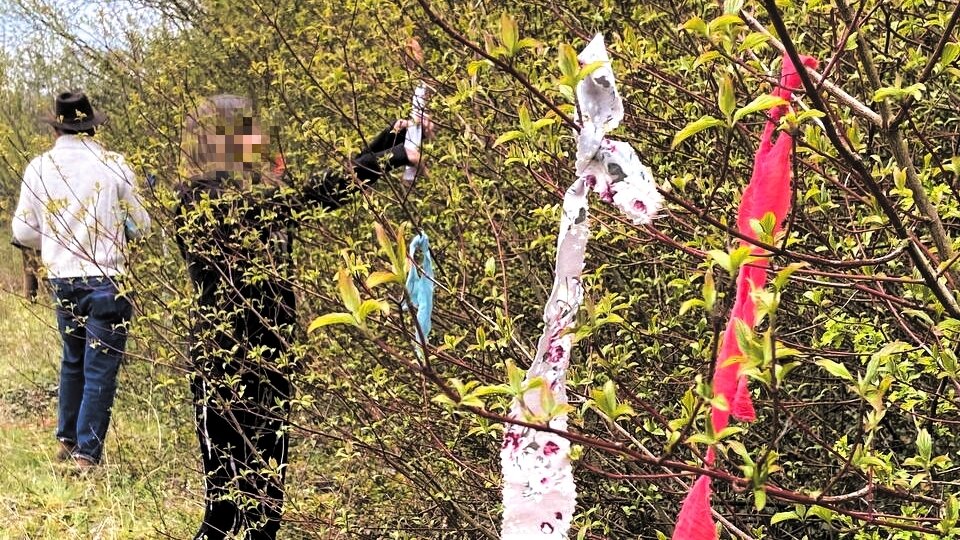Sacred Activists and locals unite in awareness-raising walk to save Stonehenge with Clootie Project
Sacred Earth Activists joined forces with locals on Sunday (2 May) to walk the route of the proposed tunnel development near Stonehenge in order to raise awareness of the destruction it would cause to the local environment and sacred sites.
As part of a weekend celebration to mark the Celtic fire festival of Beltane, about 50 members of Sacred Earth Activism, the Stonehenge Heritage Action Group, Extinction Rebellion Visionary Cultures and concerned locals, followed the ancient custom of tying clooties, or prayer ribbons, to trees and fences along the A303 so that the spirits of place would hear their petitions. The walk started at the Countess roundabout, where it is proposed the new tunnel will begin, and ended with a ceremony to mark Beltane.
Sue, one of the visionaries of this action explains, 'This sacred art activism, the Stonehenge Clootie Project, is to make visible the voices and prayers of those people who care deeply about Stonehenge and the surrounding landscape.' She continues, 'It all felt beautifully positive and mindful; often activism is big and loud, but there was something quiet and connected today, a gentle presence honouring the land and our ancestors.'
In autumn 2020, Secretary of State for Transport, Grant Shapps, approved proposals for a series of road development projects around the UK, including plans for a road, tunnel and flyover development at Stonehenge. Experts warned against the move due to the destruction it would cause to the local environment and countless ancient sites, including burial mounds.
Sacred Earth Activism has been supporting the campaign to protect this sacred landscape through ceremony and sacred action, which includes holding ceremonies to celebrate the ancient solar festivals and the new and full moons.
Sacred Activists tie clooties and weave their prayers for the protection of the sacred landscape of Stonehenge
The practice of tying clooties was a Celtic tradition in both Britain and Ireland. People tied a piece of cloth, usually torn from the clothing of someone unwell, to a sacred tree near a holy well as they were believed to have healing properties. The aim was to ask the spirits of place to hear their prayers. This practice has evolved in more recent times to tying clooties at sacred sites.
The Stonehenge clooties were sent in from around the world, carrying people’s prayers to stop plans to destroy much of this sacred landscape. The pieces of material, made from natural and biodegradable fabrics, were tied with a prayer by those joining the walk.
‘In modern times, Stonehenge has come to be seen as a tourist attraction and many people have lost sight of the fact that it is, first and foremost, a sacred place of worship,’ said Di Cross, the Green Party candidate for Amesbury West in this week’s local elections and a passionate opponent of the scheme. ‘This inspiring walk has helped to re-establish that connection. Imagine if the scheme instead planned to bulldoze a local church – there would be an outcry. But, really, destroying the landscape around Stonehenge would be no different. And nor will it prove to be the panacea for traffic congestion…’
While some of the road developments approved by Grant Shapps under the UK government’s Road Investment Strategy 2 programme have been cancelled or halted as a result of legal action, the development at Stonehenge is still set to begin in the near future. But there is a legal challenge underway, with the case due to be heard at the High Court on 23 June.
Over the next few weeks, they will be placing more clooties on the trees along the route where the tunnel is proposed and are asking people to get involved by sending their clooties to: Stones, PO Box 5497, Glastonbury, Somerset, BA6 0DU.

